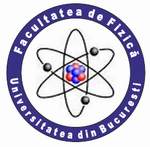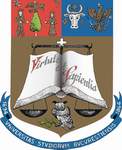| |
 |
UNIVERSITY OF BUCHAREST
FACULTY OF PHYSICS Guest
2025-10-05 22:27 |
 |
|
|
|
Conference: Bucharest University Faculty of Physics 2025 Meeting
Section: Nuclear and Elementary Particles Physics
Title:
Resonance matter as a phase of the nuclear matter formed in relativistic nuclear collisions
Authors:
Alexandru JIPA, Oana RISTEA, Marius CĂLIN, Nicolae George ȚUȚURAȘ, Tiberiu EȘANU (1), Dan ARGINTARU (2)*, Cătălin RISTEA (3), Ionel LAZANU, Diana DEARĂ, Livia ILIE
*
Affiliation:
1 IFIN-HH
2 Maritime University Constanta
3 ISS
E-mail
alexandru.jipa@unibuc.ro
Keywords:
relativistic nuclear collisions, phases of the nuclear matter, resonance matter, experiments
Abstract:
Among the possible phases of the nuclear matter formed in the overlapping regions of the colliding nuclei al high and very high energies is the resonance matter. This phase could influence significantly other phases. Therefore, many experiments in the field of the relativistic and ultrarelativistic heavy ion collisions have among the major goals the investigation of the formation conditions, properties and evolution of this phase.
In present, the major experiments (FOPI, HADES, CBM at SIS-18 and FAIR-GSI, BMN, MPD at NICA-JINR etc) have predictions and results on this phase of the hot and dense nuclear matter. Connections among these results and predictions with previous experimental results obtained in LBL, GSI, JINR and BNL experiments, in the same energy range, could be important. Therefore, in this work we include these aspects, trying to take into account dependencies on beam energy, collision centrality, participant region size etc. A detailed analysis of the results on the resonance matter formation in symmetric and asymmetric collisions at the JINR Synchrotron energies will be used to support the basic present methods and developments. Conclusions on the compatibility of the methods (negative pion spectra at low transverse momenta method, invariant mass method, for example), as well as the influences of some interesting physical quantities (temperatures, freeze-out parameters etc) on the resonance masses and their shifts are included, too.
Acknowledgement:
Many thanks for the financial support awarded by the Ministry of Education and Research and Romania-FAIR Programme during the time
|
|
|
|